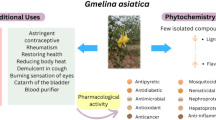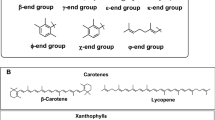Abstract
Nymphaea hybrid, a water lily from the Nymphaeaceae family, has been found to exhibit some in vivo beneficial effects. In the present study we investigated the lifespan-extending effects of Nymphaea hybrid root extract in the nematode Caenorhabditis elegans. We found that Nymphaea hybrid root extract significantly extended the lifespan of C.elegans and improved its locomotion during aging. Moreover, Nymphaea hybrid root extract increased the resistance of C.elegans to both heat stress and oxidative stress. We found that the ability of Nymphaea hybrid root extract to increase lifespan was independent of its antimicrobial effects and was probably associated with its effects on the reproduction of C.elegans. In addition, the lifespan-extending effects of Nymphaea hybrid root extract were found to be dependent on the insulin/IGF signaling pathway. We also found that total flavones of Nymphaea hybrid could increase survival of C.elegans in both normal and adverse conditions, indicating that total flavones comprise the major fractions with lifespan-extending effects. Therefore, Nymphaea hybrid root extract has lifespan-extending effects in C.elegans and could be developed as a functional food.





Similar content being viewed by others
Abbreviations
- NHRE:
-
Nymphaea hybrid root extract
- C. elegans :
-
Caenorhabditis elegans
- TFNH:
-
total flavones of Nymphaea hybrid
References
Shen LR, Xiao F, Yuan P, Chen Y, Gao QK, Parnell LD, Meydani M, Ordovas JM, Li D, Lai CQ (2013) Curcumin-supplemented diets increase superoxide dismutase activity and mean lifespan in Drosophila. Age 35(4):1133–1142 (Dordr)
Paredes-López O, Cervantes-Ceja ML, Vigna-Pérez M, Hernández-Pérez T (2010) Berries: improving human health and healthy aging, and promoting quality life–a review. Plant Foods Hum Nutr 65(3):299–308
Cho SC, Park MC, Keam B, Choi JM, Cho Y, Hyun S, Park SC, Lee J (2010) DDS, 4,4’-diaminodiphenylsulfone, extends organismic lifespan. Proc Natl Acad Sci USA 107(45):19326–19331
Zhang W, Lv T, Li M, Wu Q, Yang L, Liu H, Sun D, Sun L, Zhuang Z, Wang D (2013) Beneficial effects of wheat gluten hydrolysate to extend lifespan and induce stress resistance in nematode Caenorhabditis elegans. PLoS One 8(9):e74553
Evason K, Huang C, Yamben I, Covey DF, Kornfeld K (2005) Anticonvulsant medications extend worm life-span. Science 307:258–262
Fitzenberger E, Deusing DJ, Wittkop A, Kler A, Kriesl E, Bonnländer B, Wenzel U (2014) Effects of plant extracts on the reversal of glucose-induced impairment of stress-resistance in Caenorhabditis elegans. Plant Foods Hum Nutr 69(1):78–84
Lee SH, An HS, Jung YW, Lee EJ, Lee HY, Choi ES, An SW, Son H, Lee SJ, Kim JB, Min KJ (2014) Korean mistletoe (Viscum album coloratum) extract extends the lifespan of nematodes and fruit flies. Biogerontology 15(2):153–164
Zuo Y, Peng C, Liang Y, Ma KY, Yu H, Edwin Chan HY, Chen ZY (2012) Black rice extract extends the lifespan of fruit flies. Food Funct 3(12):1271–1279
Nakagawa-Yagi Y, Sato Y, Matsumoto E, Nakatsuka S, Sakaki T, Muramatsu Y, Hara T, Aigaki T (2012) Pharmacological modulation of histone demethylase activity by a small molecule isolated from subcritical water extracts of Sasa senanensis leaves prolongs the lifespan of Drosophila melanogaster. BMC Complement Altern Med 12:101
Yang X, Zhang P, Wu J, Xiong S, Jin N, Huang Z (2012) The neuroprotective and lifespan-extension activities of Damnacanthus officinarum extracts in Caenorhabditis elegans. J Ethnopharmacol 141(1):41–47
Ren HR, Shan CY, Jiang HF, Zhang WM (2011) Inhibition of the extract from Nymphaea hybrid on the activity of tyrosinase (in Chinese). Nat Prod Res and Dev 23(6):1122–1126 (ISSN: 1001–6880)
Zhang WM, Jiang HF, Xu H, Liu XT, Zhang J (2009) Experimental study on reducing blood lipid of Nymphaea hybrid (in Chinese). Sci Technol Food Ind 2:111–112, ISSN: 1002–0306
Jiang HF, Jin JH, Zhao BT, Zhang WM (2012) Study on protective effects of Nymphaea hybrid on acute alcohol liver injury in mice (in Chinese). Chinese Wild Plant Resources 31(5):18–19 (ISSN: 1006–9690)
Ren HR, Zhang WM, Shan CY, Jiang HF, Zhang J (2010) Study on antioxidant activity of ethanol extract from the flower of Nymphaea hybrid (in Chinese). Food Sci Technol 3:200–203, ISSN: 1005–9989
Sin O, Michels H, Nollen EA (2014) Genetic screens in Caenorhabditis elegans models for neurodegenerative diseases. Biochim Biophys Acta 1842(10):1951–1959
O’Reilly LP, Luke CJ, Perlmutter DH, Silverman GA, Pak SC (2014) C. elegans in high-throughput drug discovery. Adv Drug Deliv Rev 69–70:247–53
Antebi A (2007) Genetics of aging in Caenorhabditis elegans. PLoS Genet 3(9):1565–1571
Tissenbaum HA (2012) Genetics, life span, health span, and the aging process in Caenorhabditis elegans. J Gerontol A Biol Sci Med Sci 67(5):503–510
Ni Z, Lee SS (2010) RNAi screens to identify components of gene networks that modulate aging in Caenorhabditis elegans. Brief Funct Genomics 9(1):53–64
Collins JJ, Evason K, Kornfeld K (2006) Pharmacology of delayed aging and extended lifespan of Caenorhabditis elegans. Exp Gerontol 41(10):1032–1039
Olsen A, Vantipalli MC, Lithgow GJ (2006) Using Caenorhabditis elegans as a model for aging and age-related diseases. Ann NY Acad Sci 1067:120–128
Brenner S (1974) The genetics of Caenorhabditis elegans. Genetics 77:71–94
Lithgow G, White T, Melov S, Johnson T (1995) Thermotolerance and extended life-span conferred by single-gene mutations and induced by thermal stress. Proc Natl Acad Sci USA 92:7540–7544
Wilson MA, Shukitt-Hale B, Kalt W, Ingram DK, Joseph JA, Wolkow CA (2006) Blueberry polyphenols increase lifespan and thermotolerance in Caenorhabditis elegans. Aging Cell 5(1):59–68
Hsin H, Kenyon C (1999) Signals from the reproductive system regulate the lifespan of C. elegans. Nature 399(6734):362–366
Antebi A (2013) Regulation of longevity by the reproductive system. Exp Gerontol 48(7):596–602
Hansen M, Flatt T, Aguilaniu H (2013) Reproduction, fat metabolism, and life span: what is the connection? Cell Metab 17(1):10–19
Kim YS, Seo HW, Lee MH, Kim DK, Jeon H, Cha DS (2014) Protocatechuic acid extends lifespan and increases stress resistance in Caenorhabditis elegans. Arch Pharm Res 37(2):245–252
Harrington LA, Harley CB (1988) Effect of vitamin E on lifespan and reproduction in Caenorhabditis elegans. Mech Ageing Dev 43(1):71–78
Kaletsky R, Murphy CT (2010) The role of insulin/IGF-like signaling in C. elegans longevity and aging. Dis Model Mech 3(7–8):415–419
Acknowledgments
This work was supported by National Natural Science Foundation of China (31300707), Scientific Starting Fund from Changzhou University (ZMF11020011), National Science and Technology Support Program (2011BAD33B03).
Conflict of Interest
Authors declare that they have no conflict of interest.
Human or Animal Studies
This article contain studies with Caenorhabditis elegans,which is a popular model animal.
Author information
Authors and Affiliations
Corresponding authors
Additional information
Ziheng Zhuang, Ting Lv and Min Li are contributed equally to this work.
Electronic supplementary material
Below is the link to the electronic supplementary material.
ESM 1
(PDF 241 kb)
Rights and permissions
About this article
Cite this article
Zhuang, Z., Lv, T., Li, M. et al. The Lifespan-Extending Effects of Nymphaea hybrid Root Extract in the Nematode Caenorhabditis elegans . Plant Foods Hum Nutr 69, 304–309 (2014). https://doi.org/10.1007/s11130-014-0448-3
Published:
Issue Date:
DOI: https://doi.org/10.1007/s11130-014-0448-3




